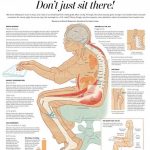Medications for Chronic Pain
Acetaminophen, NSAIDs, Opioids, and Other Medications
When it comes to treating chronic pain, medications play a crucial role. There are numerous medications available to help you manage pain. However, every pain patient is different and responds to medications differently. Some people may need to take prescription-strength non-steroidal anti-inflammatory drugs (NSAIDs) daily, while others may need something more potent, such as an opioid.
Over-the-counter medications, such as aspirin,atetaminophen, or ibuprofen, may not be strong enough. The majority of chronic pain patients need prescription medications to cope with pain. Note that many prescription medication may contain acetaminophen or ibuprofen, so tell your doctor if you take over the counter versions of these medications.
Although there are many types and brands of medications, what medication your doctor prescribes depends on you—your pain level, treatment goals, and overall health.
Before taking any medication, even if it’s an over-the-counter medication, discuss the medication with your doctor.
Some medications have serious side effects if they’re not taken as directed. Also, make sure you tell your doctor about everything you’re taking, including herbal remedies and supplements, because of possible drug interactions or side effects.
Non-steroidal Anti-inflammatory Drugs (NSAIDs)
NSAIDs are a type of analgesic (a painkiller or pain reliever) but they also help fight inflammation.
They’re similar to steroids because they work on the body’s inflammatory response. However, NSAIDs do this without using steroids. If taken long-term, steroids have side effects, such as weight gain and osteoporosis Your body also gets used to the steroids, so you have to gradually stop taking them.
Osteoarthritis, rheumatoid arthritis, and headaches, are common conditions that NSAIDs treat.
COX-2 inhibitors are a newer class of prescription-strength NSAIDs. Examples of COX-2 inhibitors are celecoxib (Celebrex) and meloxicam (Mobic).
In July, 2015, the FDA strengthened existing warning in prescription drug labels and over-the-counter (OTC) Drug Facts labels to indicate that NSAIDs can increase the chance of a heart attack or stroke, either of which can lead to death. Those serious side effects can occur as early as the first few weeks of using an NSAID, and the risk might rise the longer people take NSAIDs. (Although aspirin is also an NSAID, this revised warning doesn’t apply to aspirin.)
Opioids
In the most extreme pain cases, your doctor can prescribe you an opioid, but you’ll need to be under your doctor’s careful supervision when taking this medication.
Opioids—also called narcotics—are potent painkillers. They provide immediate relief to intense pain by changing your brain’s perception of the pain message. However, opioids are typically prescribed only if other medication options aren’t successful. They may be prescribed for low back pain, neuropathic pain, or arthritis pain, for example.
Examples of opioids are oxycodone (Endocet,oxycotin), tramadol (Tramadol , ultracet), and MORPHINE
Other Medications for Chronic Pain
There are many other medications that can help control chronic pain and other symptoms. Below is a list of some of these medications.
Anti-depressants
If your doctor prescribes an anti-depressant, that doesn’t mean you’re depressed. Anti-depressants are used for other reasons, too. In fact, they help control pain by changing your body’s chemicals.
There are 3 categories of anti-depressants: tricyclic anti-depressants (TCAs), serotonin and norepinephrine reuptake inhibitors (SNRIs), and selective serotonin reuptake inhibitors (SSRIs). TCAs, SNRIs, and SSRIs each work in a different way.
TCAs raise the level of certain neurotransmitters—chemicals messengers—while SNRIs change the re-absorption of neurotransmitters in the body. However, even though SSRIs are sometimes prescribed, they don’t work well for chronic pain.
Anti-depressants can treat chronic pain associated with diabetic neuropathy, fibromyalgia, neck pain, and low back pain.
Examples of TCAs are amitriptyline hydrochloride (Elavil) and nortriptyline (Pamelor).
Examples of SNRIs are duloxetine (eg, Cymbalta) and venlafaxine (Effexor).
Examples of SSRIs are hydrochloride (Prozac) and sertraline paroxetine (Zoloft).
Anti-seizure Medications
Also known as anti-convulsants or anti-epileptics, anti-seizure medications work to suppress the nerve signals going to your brain so pain messages aren’t transmitted as well. As with anti-depressants, if your doctor prescribes an anti-seizure medication, that doesn’t mean he or she is treating you for seizures.
Anti-seizure medications can treat chronic pain caused by diabetic neuropathy and fibromyalgia.
Examples of anti-seizure medications are pregabalin (Lyrica) and gabapentin (Neurontin).
Corticosteroids
Steroids are powerful anti-inflammatory medications that can be taken orally or injected. If prescription-strength NSAIDs haven’t reduced your pain, your doctor may recommend that you try corticosteroids. They’re responsible for stopping your body from producing the chemical that causes inflammation.
However, as mentioned above, steroids have certain side effects (eg, weight gain), and you can’t just stop taking them-your dose must be slowly decreased.
Corticosteroids are used to treat migraines, osteoarthritis, rheumatoid arthritis, and low back pain.
Prednisone (Deltasone),Medrol,Solumedrol,depomedrol(Methyl prednisolone) and dectancyl (Dexamethasone), Diprospan(Betametasone) are examples of corticosteroids.
Muscle Relaxants
These medications are used to reduce aches and pains associated with muscles strains, sprains, or spasms. Muscle relaxants can provide the pain relief you need to manage your daily activities by helping relax tight muscles and improve the quality of sleep you get.
Muscle relaxants aren’t typically recommended for treating chronic pain, but they may help with fibromyalgia and low back pain symptoms.
Examples of muscle relaxants are Mephenesine (Decontractyl),Nemesulide(Myonal),Thiocolchicoside(Coltramyl) and baclofen (Lioresal, Bamifen).
Topical Medications
Some medications are highly effective when used topically. Also known as topical analgesics, topical medications, such as a lidocaine patch (Lidopatch) can help you manage pain caused by diabetic neuropathy, osteoarthritis, and low back pain.
Another example is capsaicin cream. Capsaicin, which comes from chili peppers, can temporarily reduce pain, but for maximum benefits, it needs to be applied several times a day for about 6 weeks.
Your Treatment Plan
The most important thing to remember when taking medications to treat your chronic pain is that you need to be an active participant in your own treatment plan. Don’t be afraid to ask questions—you have to be your own advocate.
Over time, you may need to increase or decrease your dose of medication or perhaps change medications, so it’s essential that you carefully follow your doctor’s directions.
Also, be on the lookout for side effects. If you notice any new symptoms, tell your doctor immediately. But don’t stop taking your medication unless your doctor tells you to do so.
How Safe Is Your NSAID?
New FDA Warning on Heart Attack and Stroke Risk, Raises Questions About How Safe Are NSAIDs.
Before you reach into the medicine cabinet to relieve your headache, backache, or arthritis, take note! FDA strengthened the warning on prescription and over-the-counter (OTC) labels that NSAIDs (nonsteroidal anti-inflammatory drugs) can increase the chance of a heart attack or stroke, either of which can lead to death.
Pain patients taking either OTC or prescription versions of NSAIDs should be aware of adverse events associated with these commonly used medications, especially if you have pre-existing cardiovascular conditions or history of gastrointestinal bleeding. Therefore, NSAIDs should be limited to the lowest dose and shortest duration due to the risk of gastric distress, ulceration, bleeding, increased risk of cardiovascular events, and kidney toxicity.
To address these concerns, pharmaceutical companies have been investigating new delivery systems. Recently, Iroko Pharmaceuticals has gained approval of three new formulations of NSAIDs that contains submicron particles of the NSAID that are approximately 10 times smaller than their original size. This smaller particle size provides an increased surface area, leading to faster dissolution, thus “allowing clinicins to prescribe the lowest effective dose of NSAIDs for the shortest possible duration,” noted the company.
Patients taking NSAIDs should seek medical attention immediately if they experience symptoms such as chest pain, shortness of breath or trouble breathing, weakness in one part or side of their body, or slurred speech, noted the agency. These serious side effects can occur as early as the first weeks of using an NSAID and the risk may increase the longer you are taking an NSAID. The risk appears greater at higher doses; use the lowest effective amount for the shortest possible time.
The recent FDA announcement is based on the agency’s comprehensive review of new safety information. “As is the case with current prescription NSAID labels, the Drug Facts labels of OTC non-aspirin NSAIDs already contain information on heart attack and stroke risk. The FDA will also request updates to the OTC non-aspirin NSAID Drug Facts labels,” noted a release from the agency.
Based on the FDA review and the advisory committees’ recommendations, the prescription NSAID labels will be revised to reflect the following information:
- The risk of heart attack or stroke can occur as early as the first weeks of using an NSAID. The risk may increase with longer use of the NSAID.
- The risk appears greater at higher doses.
- It was previously thought that all NSAIDs may have a similar risk. Newer information makes it less clear that the risk for heart attack or stroke is similar for all NSAIDs; however, this newer information is not sufficient for us to determine that the risk of any particular NSAID is definitely higher or lower than that of any other particular NSAID.
- NSAIDs can increase the risk of heart attack or stroke in patients with or without heart disease or risk factors for heart disease. A large number of studies support this finding, with varying estimates of how much the risk is increased, depending on the drugs and the doses studied.
- In general, patients with heart disease or risk factors for it have a greater likelihood of heart attack or stroke following NSAID use than patients without these risk factors because they have a higher risk at baseline.
- Patients treated with NSAIDs following a first heart attack were more likely to die in the first year after the heart attack compared to patients who were not treated with NSAIDs after their first heart attack.
- There is an increased risk of heart failure with NSAID use.
Many medicines contain NSAIDs, including those used for colds, flu, and sleep, so it is important to read the labels and avoid taking multiple medicines that contain NSAIDs.
Patients who take low-dose aspirin for protection against heart attack and stroke should know that some NSAIDs, including those in OTC products such as ibuprofen and naproxen, can interfere with that protective effect.




